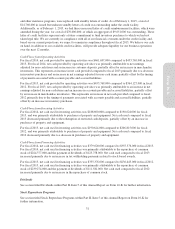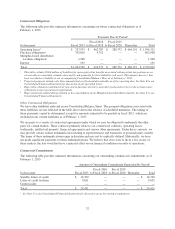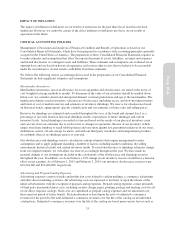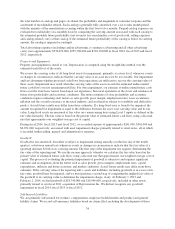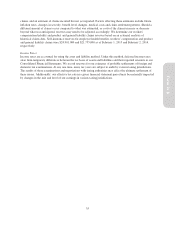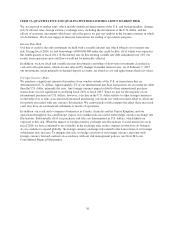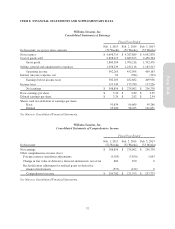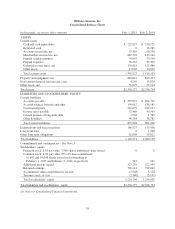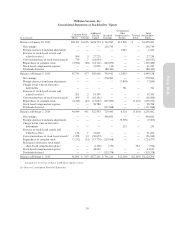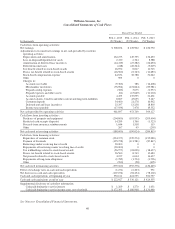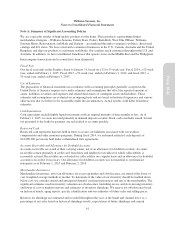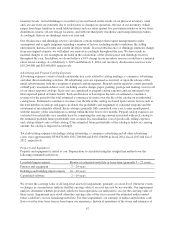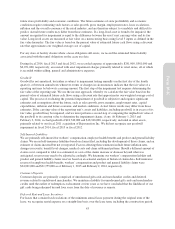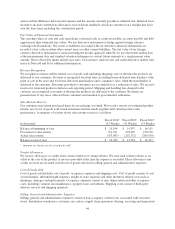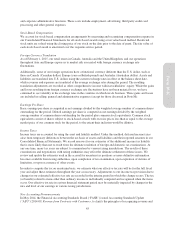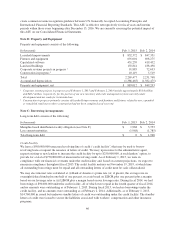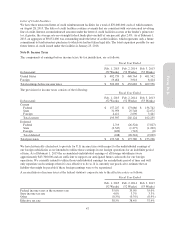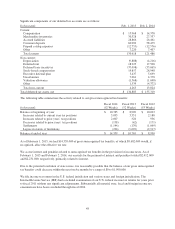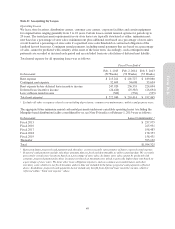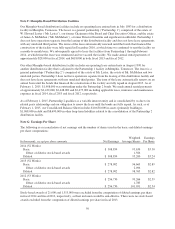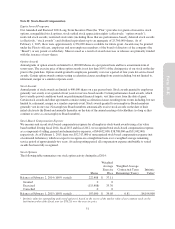Pottery Barn 2014 Annual Report Download - page 55
Download and view the complete annual report
Please find page 55 of the 2014 Pottery Barn annual report below. You can navigate through the pages in the report by either clicking on the pages listed below, or by using the keyword search tool below to find specific information within the annual report.
Williams-Sonoma, Inc.
Notes to Consolidated Financial Statements
Note A: Summary of Significant Accounting Policies
We are a specialty retailer of high-quality products for the home. These products, representing distinct
merchandise strategies – Williams-Sonoma, Pottery Barn, Pottery Barn Kids, West Elm, PBteen, Williams-
Sonoma Home, Rejuvenation, and Mark and Graham – are marketed through e-commerce websites, direct mail
catalogs and 601 stores. We have retail and e-commerce businesses in the U.S., Canada, Australia and the United
Kingdom, and ship our products to customers worldwide. Our catalogs reach customers throughout the U.S. and
Australia. In addition, we have unaffiliated franchisees that operate stores in the Middle East and the Philippines.
Intercompany transactions and accounts have been eliminated.
Fiscal Year
Our fiscal year ends on the Sunday closest to January 31, based on a 52 or 53-week year. Fiscal 2014, a 52-week
year, ended on February 1, 2015; Fiscal 2013, a 52-week year, ended on February 2, 2014; and fiscal 2012, a
53-week year, ended on February 3, 2013.
Use of Estimates
The preparation of financial statements in accordance with accounting principles generally accepted in the
United States of America requires us to make estimates and assumptions that affect the reported amounts of
assets, liabilities, revenues and expenses and related disclosures of contingent assets and liabilities. These
estimates and assumptions are evaluated on an ongoing basis and are based on historical experience and various
other factors that we believe to be reasonable under the circumstances. Actual results could differ from these
estimates.
Cash Equivalents
Cash equivalents include highly liquid investments with an original maturity of three months or less. As of
February 1, 2015, we were invested primarily in demand deposit accounts. Book cash overdrafts issued, but not
yet presented to the bank for payment, are reclassified to accounts payable.
Restricted Cash
Restricted cash represents deposits held in trusts to secure our liabilities associated with our workers’
compensation and other insurance programs. During fiscal 2014, we redeemed restricted cash deposits of
$14,289,000 previously held under collateralized trust agreements.
Accounts Receivable and Allowance for Doubtful Accounts
Accounts receivable are stated at their carrying values, net of an allowance for doubtful accounts. Accounts
receivable consist primarily of credit card, franchisee and landlord receivables for which collectability is
reasonably assured. Receivables are evaluated for collectability on a regular basis and an allowance for doubtful
accounts is recorded, if necessary. Our allowance for doubtful accounts was not material to our financial
statements as of February 1, 2015 and February 2, 2014.
Merchandise Inventories
Merchandise inventories, net of an allowance for excess quantities and obsolescence, are stated at the lower of
cost (weighted average method) or market. To determine if the value of our inventory should be marked down
below cost, we consider current and anticipated demand, customer preferences and age of the merchandise. The
significant estimates used in inventory valuation are obsolescence (including excess and slow-moving inventory
and lower of cost or market reserves) and estimates of inventory shrinkage. We reserve for obsolescence based
on historical trends, aging reports, specific identification and our estimates of future sales and selling prices.
Reserves for shrinkage are estimated and recorded throughout the year, at the brand and channel level, as a
percentage of net sales based on historical shrinkage results, expectations of future shrinkage and current
41
Form 10-K


